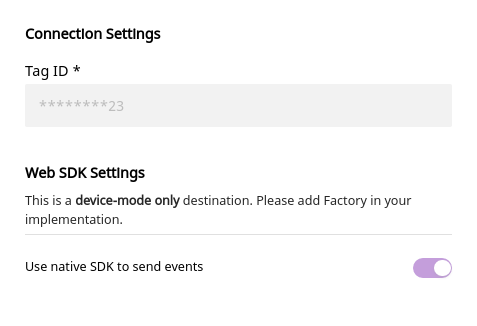Bing Ads
Step-by-step guide on sending your event data from RudderStack to Bing Ads
Bing Ads is a pay per click (PPC) advertising platform that works on both Bing and Yahoo search engines. It allows marketers to track and monitor their ad campaigns, resulting clicks, CTRs, and more. With Bing Ads, you can also implement efficient ad retargeting for your customers who have completed actions like adding product to a cart or view a product without purchasing it.
RudderStack supports Bing Ads as a destination to which you can send your real-time event data seamlessly.
Getting started
To enable sending data to Bing Ads, you will first need to add it as a destination to the source from which you are sending the event data. Once the destination is enabled, events from our JavaScript SDK will start flowing to Bing Ads.
Before configuring your source and destination on the RudderStack, please check whether the platform you are sending the events from is supported by Bing Ads. Please refer the following table to do so:
| Connection Mode | Web | Mobile | Server |
|---|---|---|---|
| Device mode | Supported | - | - |
| Cloud mode | - | - | - |
Once you have confirmed that the platform supports sending events to Bing Ads, perform the steps below:
- From your RudderStack dashboard, add the source and Bing Ads as a destination.
- Give a name to the destination and click on Next. You should then see the following screen:
 Configuration Settings for Bing Ads
Configuration Settings for Bing Ads- Please enter the Tag ID of your Bing Ads account.
- Click on Save to finish the configuration. Bing Ads will now be added and enabled as a destination in RudderStack.
Page
You can make a page call to Bing Ads to record a page view. The SDK will send this data to Bing Ads with event type pageLoad.
A sample page call is as shown:
rudderanalytics.page()Track
The track call allows you to capture any action that the user might perform, and the properties associated with that action. Each action is considered to be an event.
RudderStack maps the properties.category and properties.currency fields to the corresponding category and currency fields of Bing Ads, respectively. RudderStack also maps properties.total and properties.revenue or properties.value to the variable revenue.
To use this call, only the event name is required - all other properties are optional.
A sample track call looks like the following:
rudderanalytics.track("Item Purchased", { category: "MyCategory", currency: "INR", total: 5, revenue: 125, value: 100,})Priority of properties.total is higher followed by properties.revenue followed by properties.value.
Configuring the UET tag
Before you can track conversions or target audiences, you need to create a UET tag in Bing Ads and then add it to the Connection Settings. Follow the steps mentioned in the Bing Ads documentation to create a UET tag.
The UET tag can be created after logging into your Bing Ads account and navigating to Tools - Conversion Tracking - UET tag - Create UET tag.
Contact us
If you come across any issues while configuring Bing Ads with RudderStack, please feel free to contact us. You can also start a conversation in our Slack community; we will be happy to talk to you!